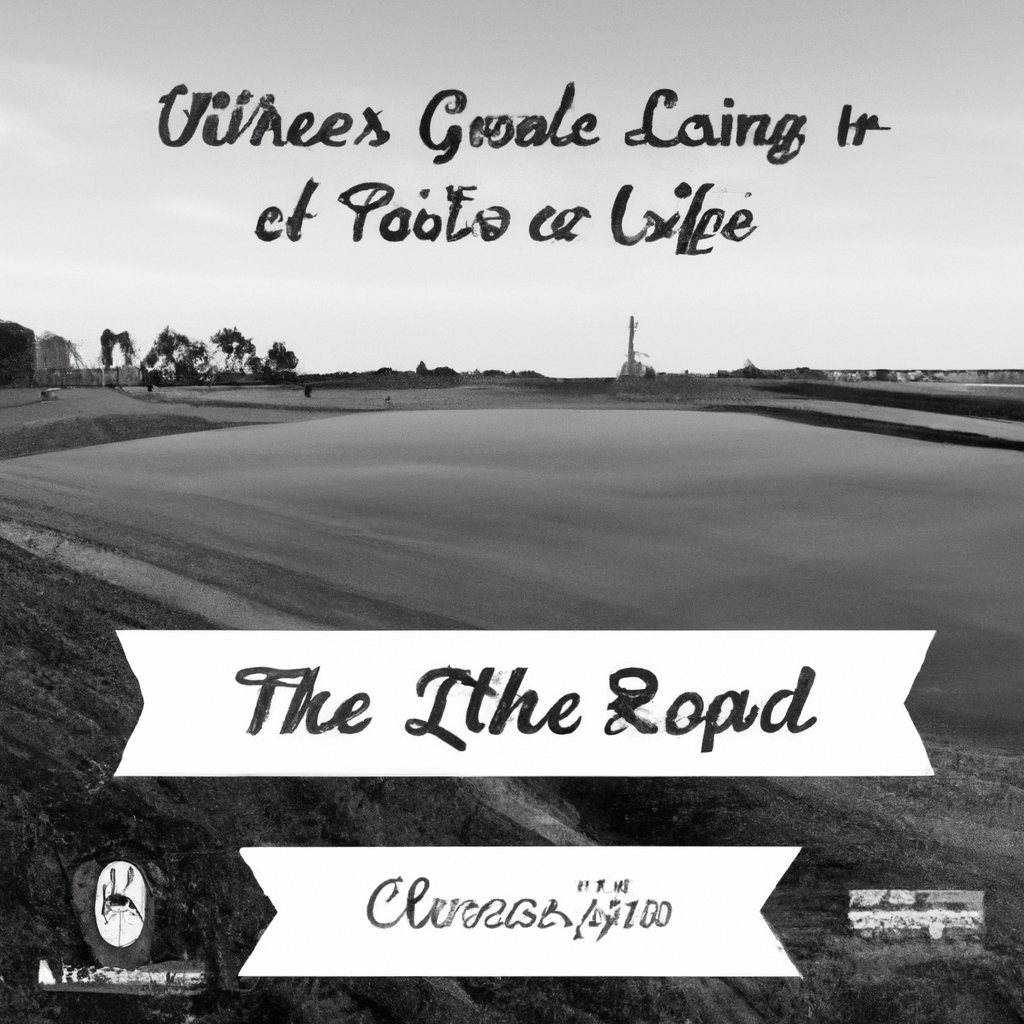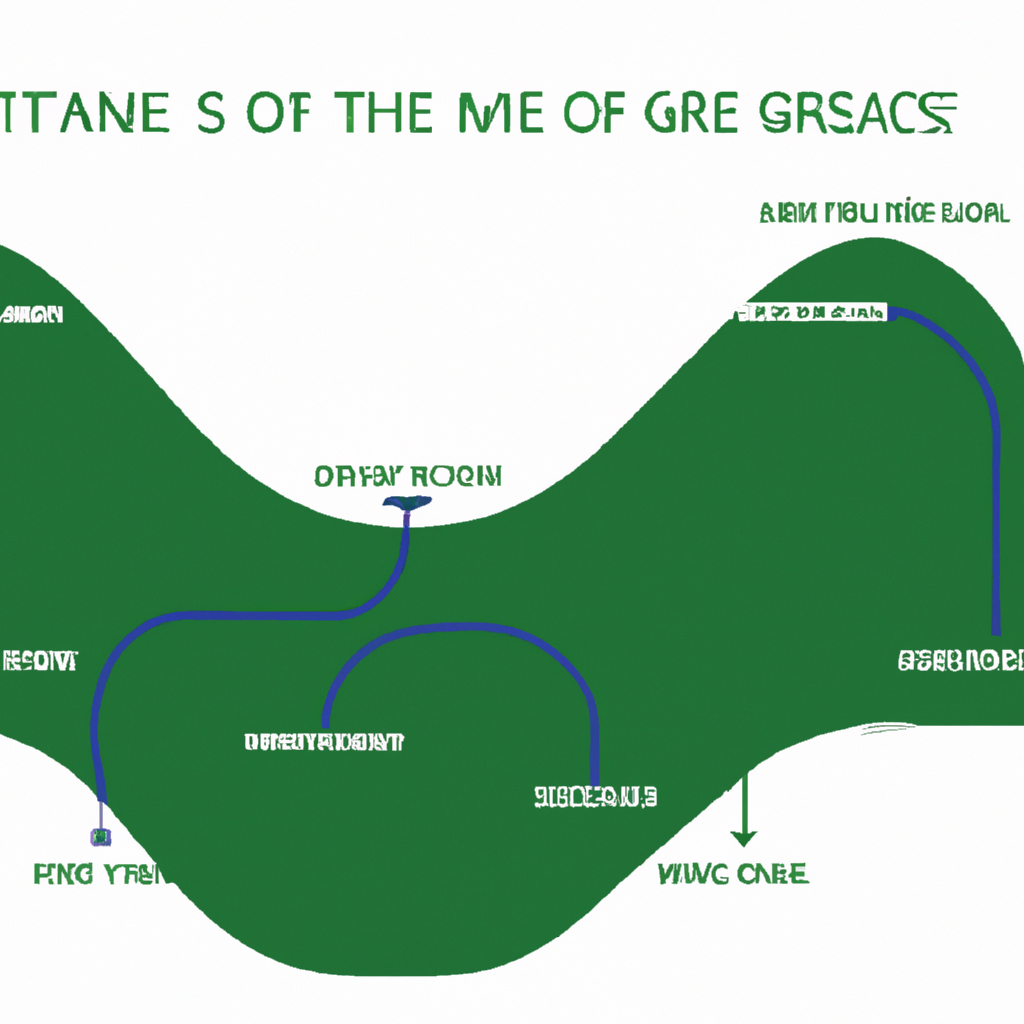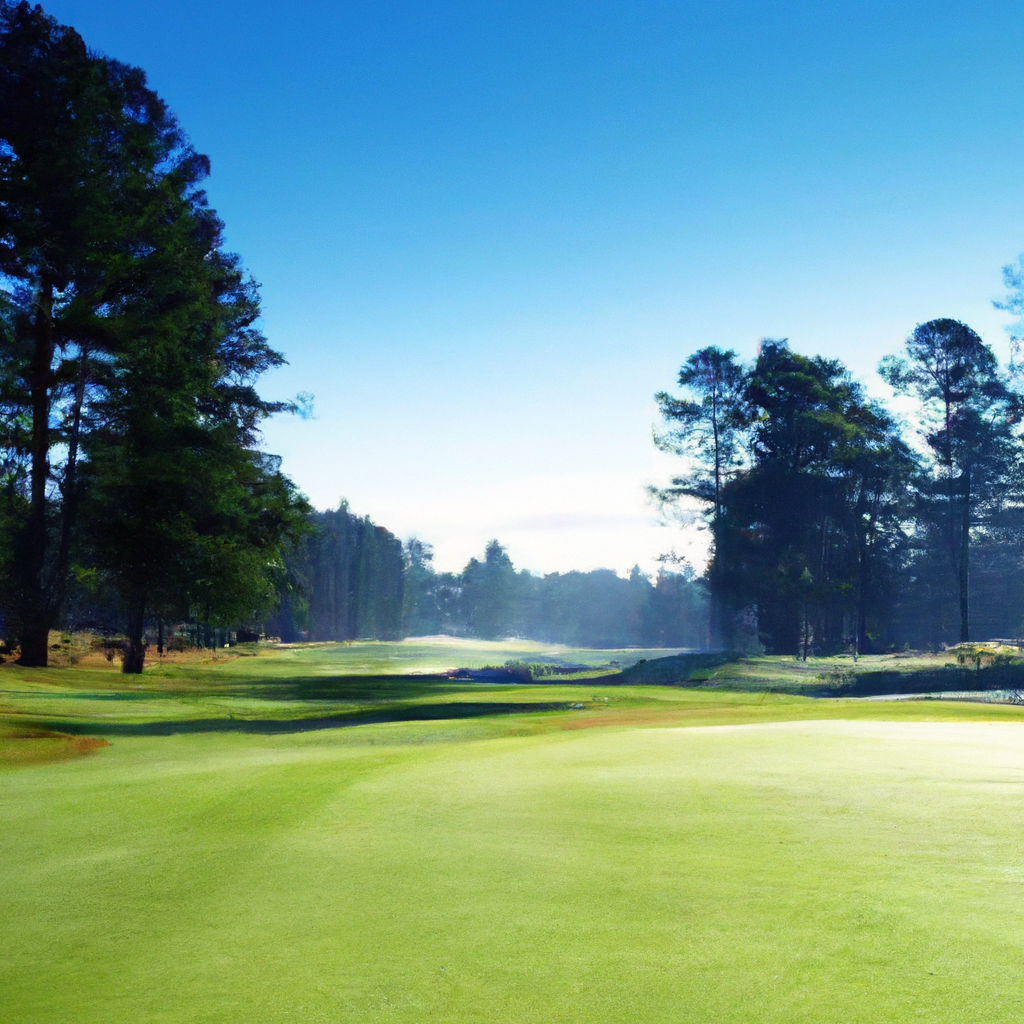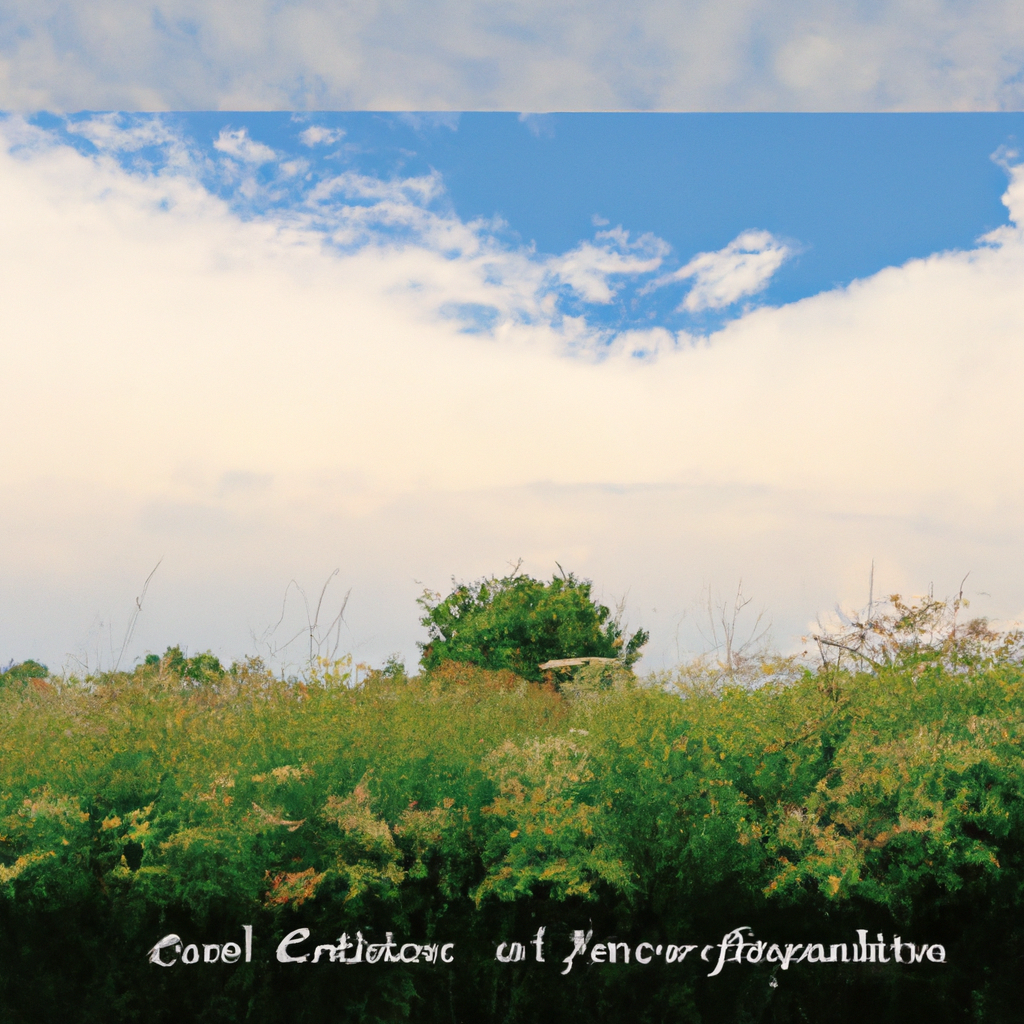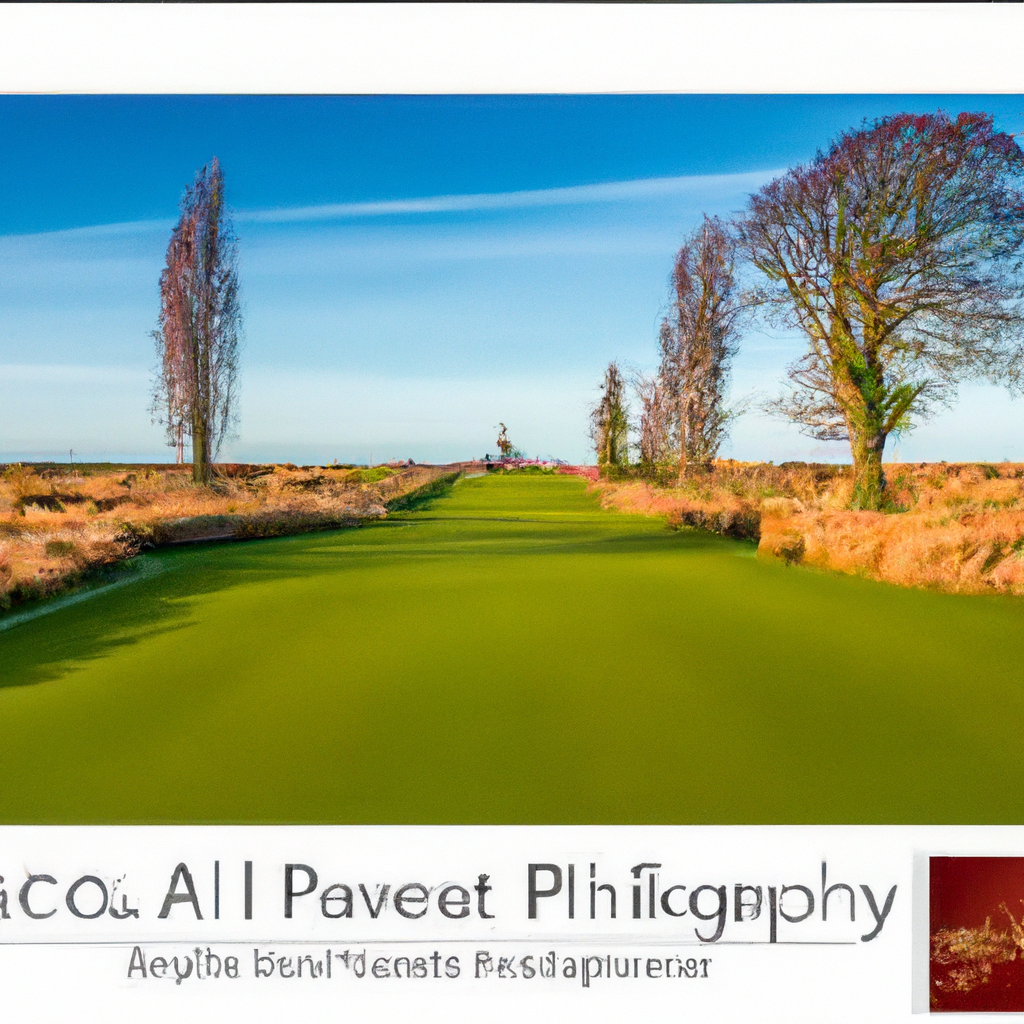Imagine a golf course that combines the best of both worlds – the exclusivity and prestige of a private club, with the accessibility and flexibility of a public course. Enter the concept of a semi-private golf course. In this intriguing article, we will explore the fascinating world of semi-private golf courses, discovering what sets them apart from their private and public counterparts, and why they are becoming an increasingly popular choice for golfers of all levels of expertise. Get ready to tee off as we dive into the captivating realm of semi-private golf courses!

What is a Semi-Private Golf Course?
A semi-private golf course is a type of golf facility that offers a combination of both private and public features. It provides a balance between exclusivity and accessibility, allowing golfers to enjoy a more personalized experience while still welcoming non-members to play. With a semi-private golf course, individuals have the opportunity to become members and gain access to exclusive amenities, while also providing non-members the chance to enjoy the course on a pay-as-you-play basis. It is a unique concept that appeals to golfers of all skill levels, providing a welcoming and inclusive environment for the sport.
Advantages of Semi-Private Golf Courses
Enhanced golfing experience
One of the major advantages of choosing a semi-private golf course is the enhanced golfing experience it offers. With limited membership numbers, you can expect less congestion on the course, which leads to a more enjoyable and relaxed round of golf. The fairways and greens are generally better maintained, providing a higher-quality playing surface. The overall experience is heightened, allowing you to fully immerse yourself in the sport and focus on improving your game.
Access to exclusive amenities
Semi-private golf courses often boast a range of exclusive amenities that cater to the needs and desires of their members. These amenities can include a clubhouse with fine dining options, locker rooms, pro shops, practice facilities, and even swimming pools or tennis courts. As a member, you have the privilege of accessing these amenities, which adds to the overall experience and enjoyment of the facility. It creates a sense of community and provides a place where you can relax and socialize after a round of golf.
More flexible membership options
Unlike fully private golf clubs that often have stringent membership requirements and hefty initiation fees, semi-private golf courses offer more flexibility in their membership options. They typically have different tiers of membership, allowing you to choose a level that fits your budget and desired level of access to the facilities. Whether you are looking for full access to all amenities or prefer a more limited membership focused solely on golf, semi-private golf courses can cater to your specific needs and provide you with the flexibility to customize your membership based on your preferences.
Opportunities for socializing and networking
One of the key benefits of joining a semi-private golf course is the social and networking opportunities it provides. The community atmosphere fosters connections and friendships among fellow members who share a passion for golf. This creates an environment where you can meet new people, expand your social network, and enjoy the camaraderie that comes with being part of a golfing community. It also offers potential opportunities for business networking, as many professionals use golf as a way to build relationships and conduct business in a relaxed and casual setting.
Membership Structure in Semi-Private Golf Courses
Limited number of members
Semi-private golf courses typically have a limited number of members, ensuring a more exclusive and less crowded experience. By capping the membership numbers, the course can maintain a high standard of play, ensuring that members have ample opportunities to access the facilities and enjoy their rounds of golf without excessive wait times. This aspect of semi-private golf courses contributes to the overall appeal and desirability for those seeking a more intimate and personalized golfing experience.
Guest privileges
One of the advantages of joining a semi-private golf course is the ability to bring guests to play. Most semi-private courses allow members to invite guests for a round of golf, providing an opportunity to share their love of the sport with friends, family, or business associates. These guest privileges offer a way to introduce others to the course and its amenities, further enhancing the social aspect of membership. It also allows for flexibility in terms of who you can play with, giving you the freedom to enjoy the course with different groups of people.
Fees and dues structure
Semi-private golf courses operate on a fee and dues structure that encompasses both initiation costs and monthly or annual dues. The initiation costs vary depending on the specific course and its amenities, while the dues help cover the ongoing maintenance and operational expenses associated with the facility. It is important to fully understand the fee and dues structure before committing to membership, ensuring that it is within your budget and offers the value you seek based on your golfing needs and expectations.
Waitlist and admissions process
Due to the limited number of memberships available, some semi-private golf courses have a waitlist or admissions process to manage the demand for membership. This process ensures fairness and allows individuals to join when spots become available. If you are interested in becoming a member of a semi-private golf course, it is recommended to inquire about the waitlist or admissions process and determine the necessary steps to secure membership. Planning ahead and being proactive can increase your chances of joining a highly sought-after course.

Maintenance and Course Management in Semi-Private Golf Courses
Professional course maintenance
Maintaining the condition and playability of the golf course is a top priority for semi-private golf courses. These facilities often employ professional course maintenance staff who are dedicated to keeping the fairways, greens, and other areas in pristine condition. Regular maintenance schedules ensure that the course is well-manicured and provides an exceptional playing surface for members and guests. This commitment to course maintenance contributes to the overall quality and reputation of the semi-private golf course.
Quality control and upgrades
To ensure that the golf course meets the highest standards, semi-private facilities often implement quality control measures and invest in upgrades as needed. Regular inspections and evaluations allow course management to identify areas that may require improvement or enhancements. These upgrades can include improvements to the irrigation system, new turfgrass varieties, enhanced landscaping, or the addition of new features to enhance the overall golfing experience. By continuously evaluating and enhancing the course, semi-private golf courses strive to provide members with an exceptional and enjoyable golfing environment.
Customization and personalization
Semi-private golf courses value the preferences and desires of their members, often offering opportunities for customization and personalization. Members may have the option to personalize their golf carts, reserve preferred tee times, or even have access to locker room customization. These small details contribute to the overall satisfaction and sense of ownership that members feel when they are part of a semi-private golf course. The ability to tailor certain aspects of their experience adds an extra level of enjoyment and exclusivity.
Golf course management team
Semi-private golf courses employ a professional management team that oversees the day-to-day operations and ensures the successful management of the facility. This team handles various responsibilities, including membership services, event planning, marketing, course maintenance coordination, and staff management. Their expertise helps create a seamless and well-organized experience for members and guests, ensuring that all aspects of the golf course function smoothly. The presence of a dedicated management team demonstrates the commitment of a semi-private golf course to excellence and delivering a top-notch golfing experience.
Playing Opportunities and Tee Time Reservations
Reserving tee times
As a member of a semi-private golf course, you typically have the advantage of reserving tee times in advance. This allows you to plan your rounds of golf according to your schedule and ensures that you have a preferred time slot. Reserving tee times also reduces waiting time and guarantees that you can enjoy a relaxed and unhurried pace of play. Whether you prefer morning tee times or prefer to play later in the day, having the ability to reserve tee times provides convenience and enhances your overall golfing experience.
Member-only events and tournaments
Semi-private golf courses often organize member-only events and tournaments, giving members the opportunity to participate in friendly competition and showcase their skills. These events can range from informal outings and weekly leagues to more competitive tournaments with various formats. Participating in member-only events adds an element of excitement and camaraderie to your golfing experience, allowing you to bond with fellow members and create lasting memories on the course.
Availability for non-members
While semi-private golf courses cater primarily to their members, they also often accommodate non-members who wish to play on the course. This flexibility ensures that the golf course remains accessible to a wider audience, allowing individuals who may not be ready for full membership or who simply want to experience the course on a pay-as-you-play basis. Balancing the needs of members and non-members ensures that the course can generate revenue while maintaining its unique atmosphere and amenities.
Benefits of early tee time reservations
One of the benefits of being a member of a semi-private golf course is the ability to secure early tee times. By reserving tee times in advance, you have the advantage of playing during the preferred time slots, especially during peak hours or prime golfing seasons. Early tee times offer a quiet and serene experience on the course, with minimal distractions and the opportunity to enjoy the beauty and tranquility of the surroundings. These coveted tee times allow members to start their day on the course, setting a positive tone for the rest of the day.
Differences between Semi-Private and Public Golf Courses
Membership requirements
The key difference between semi-private and public golf courses lies in their membership requirements. Public courses are open to the general public and do not require a membership to play. Anyone can book a tee time and enjoy a round of golf. In contrast, semi-private golf courses have a membership structure, offering exclusive access to members along with additional privileges and amenities. While membership requirements may vary, semi-private golf courses typically have a limited number of memberships available, ensuring a more personalized and exclusive experience.
Degree of exclusivity
The degree of exclusivity is another distinguishing factor between semi-private and public golf courses. Public courses are open to everyone and experience a higher volume of players, contributing to a more casual and less exclusive atmosphere. Semi-private golf courses, on the other hand, offer a greater level of exclusivity due to the limited membership numbers. This exclusivity creates a more intimate and personalized environment, where members can fully enjoy the facilities and amenities without overcrowding or excessive wait times.
Privacy and crowd management
Semi-private golf courses prioritize privacy and effective crowd management. With limited membership numbers, these facilities can control the flow of players and ensure a more peaceful and enjoyable playing experience. The serene ambience allows members to fully immerse themselves in their rounds of golf and enjoy the tranquility of the surroundings. In contrast, public courses may have more crowded fairways and slower play due to the larger volume of players. The privacy and crowd management offered by semi-private golf courses contribute to their appeal for individuals seeking a more exclusive and relaxed golfing experience.
Playing conditions and course quality
Semi-private golf courses often provide a higher standard of playing conditions and course quality compared to public courses. With a focus on maintaining the course for their limited number of members, semi-private facilities invest in professional course maintenance and enhancements. This dedication to course maintenance ensures that the fairways, greens, and other areas are well-manicured, providing a superior playing surface. The course quality at semi-private golf courses contributes to an overall better golfing experience, allowing individuals to fully enjoy their rounds of golf and take pride in their home course.
Semi-Private Golf Course Fees and Financial Considerations
Membership fees and initiation costs
When considering joining a semi-private golf course, it is important to understand the membership fees and initiation costs associated with the facility. Semi-private golf courses typically require an initiation fee, which is a one-time cost paid upon joining the club. The initiation fee may vary depending on the specific course, its amenities, and the exclusivity of the membership. Additionally, there may be different membership tiers available, each with its own associated fees. It is essential to carefully review the fees and initiation costs before committing to membership to ensure that they align with your financial capabilities and provide the value you expect.
Monthly dues and additional charges
In addition to the initiation costs, semi-private golf courses also require members to pay monthly or annual dues. These dues contribute to the ongoing maintenance and operational expenses of the facility, ensuring that the course remains in optimal condition and the amenities are properly maintained. The amount of monthly dues may vary depending on the level of membership and the specific amenities included in the membership package. It is important to budget for these monthly dues and consider any additional charges that may apply, such as food and beverage minimums or cart fees.
Benefits and value for money
When evaluating the fees and financial considerations of a semi-private golf course, it is important to assess the benefits and value for money that membership provides. Consider the amenities, playing opportunities, and overall experience offered by the course. It is often the case that semi-private golf courses provide an elevated golfing experience with exclusive amenities, superior playing conditions, and a more personalized environment. This enhanced experience and sense of exclusivity contribute to the value for money that membership can offer, making it a worthwhile investment for individuals who prioritize their golfing experience.
Economic sustainability
Semi-private golf courses operate with the goal of achieving economic sustainability. Ensuring a balance between the number of members and the available amenities and services is critical for the financial stability of the course. By carefully managing the membership numbers, semi-private golf courses can maintain a high level of service and course quality without sacrificing their long-term viability. Financial considerations, including membership fees, dues, and the continuous demand for membership, play a vital role in the economic sustainability of these facilities, allowing them to thrive and continue providing an exceptional golfing experience to their members.
Social and Networking Opportunities at Semi-Private Golf Courses
Formal and informal events
Semi-private golf courses offer a range of formal and informal events that foster a sense of community and provide opportunities for socializing and networking. These events can include golf tournaments, charity fundraisers, member appreciation parties, and themed social gatherings. Formal events allow members to showcase their skills, compete in a friendly atmosphere, and bond over their common love for golf. Informal events offer a more relaxed setting where members can connect on a more personal level, build friendships, and enjoy each other’s company. The social and networking opportunities provided by semi-private golf courses create an enhanced sense of belonging and camaraderie among members.
Social clubs and organizations
Many semi-private golf courses have social clubs or organizations that focus on specific interests or demographics, further enhancing the sense of community and connection among members. These clubs may include women’s golf associations, men’s clubs, senior groups, or junior golf programs. Joining these social clubs provides members with opportunities to meet like-minded individuals, participate in organized events, and participate in friendly competitions. The presence of social clubs and organizations adds another layer of depth to the social and networking possibilities within a semi-private golf course.
Business networking possibilities
Semi-private golf courses are popular venues for business networking due to the relaxed and casual environment they provide. Many professionals see golf as an opportunity to build relationships, make connections, and discuss business matters in a more informal setting. The shared interest in golf creates a bond among members, allowing for natural networking opportunities. Conversations and interactions on the golf course often lead to business opportunities and collaborations. Membership in a semi-private golf course provides individuals with access to a network of professionals from various industries, offering a valuable platform for business networking.
Building long-term relationships
One of the most significant advantages of being a member of a semi-private golf course is the potential to build long-term relationships. The shared love for golf brings members together and provides a common ground on which connections can flourish. Over time, these connections can evolve into lasting friendships that extend beyond the golf course. Building relationships within the golfing community allows for the exchange of experiences, advice, and support, creating a sense of belonging and camaraderie. The social and networking opportunities at semi-private golf courses play a crucial role in fostering these long-term relationships.
Semi-Private Golf Courses: Balancing Privacy and Outreach
Engaging with the local community
Although semi-private golf courses prioritize exclusivity, they also play an important role in engaging with the local community. These facilities often organize community events, charity tournaments, or junior golf programs that allow non-members to experience the course and engage with the sport of golf. By actively participating in and contributing to the local community, semi-private golf courses promote the positive benefits of golf, create awareness, and encourage individuals to take up the sport. Balancing exclusivity with outreach initiatives ensures that the sport remains accessible and continues to thrive in the community.
Community events and initiatives
Semi-private golf courses organize community events and initiatives to build connections with non-members and establish themselves as valuable contributors to the local community. These events can include golf clinics, open days, or charity tournaments that allow non-members to experience the course and its amenities. By hosting these events, semi-private golf courses encourage community involvement and foster relationships that extend beyond their membership base. Community events and initiatives showcase the course’s facilities, promote the sport of golf, and demonstrate the course’s commitment to being an active and engaged member of the community.
Partnerships with charitable organizations
Aligning with charitable organizations is a common practice for semi-private golf courses to give back to the community. These partnerships involve hosting charity tournaments or fundraising events where a portion of the proceeds directly benefit charitable causes. By actively engaging in philanthropic efforts, semi-private golf courses demonstrate their commitment to making a positive impact in the community. These partnerships also provide an opportunity for members to contribute to philanthropic endeavors and showcase the generosity and compassion of the golfing community.
Promoting the sport of golf
Semi-private golf courses play an essential role in promoting the sport of golf to both members and non-members alike. By providing access to a well-maintained course and offering a range of amenities, semi-private golf courses create an environment that encourages individuals to take up the sport and continue to improve their skills. Additionally, these courses often host clinics, lessons, or golf schools that cater to players of all ages and skill levels. Promoting the sport of golf ensures its sustainability and allows individuals to experience the physical, mental, and social benefits of the game.
Future Trends and Innovations in Semi-Private Golf Courses
Technological advancements
The future of semi-private golf courses is likely to be influenced by technological advancements that enhance the overall golfing experience. From advanced golf simulators and swing analysis systems to mobile apps for tee time reservations and real-time golf course updates, technology will continue to play an integral role in providing a more immersive and convenient golfing experience. These advancements aim to enhance the interaction between golfers and the course, making it easier to access information, improve skill development, and further customize the golfing experience for individual members.
Eco-friendly initiatives
As sustainability becomes an increasing concern globally, semi-private golf courses are expected to incorporate more eco-friendly initiatives. These initiatives may include practices such as water conservation, use of environmentally friendly turfgrass varieties, energy-efficient irrigation systems, and eco-conscious waste management strategies. By adopting eco-friendly practices, semi-private golf courses can reduce their environmental footprint and contribute to the preservation of natural resources. They also demonstrate their commitment to environmental stewardship and sustainability, aligning with growing societal and environmental expectations.
Enhanced member experiences
The future of semi-private golf courses will likely focus on enhancing the member experience through innovative offerings and services. This may include personalized digital experiences, enhanced member communication platforms, and tailored marketing opportunities. By leveraging technology and data-driven insights, semi-private golf courses can provide a more personalized and seamless experience for members, allowing them to access information, make reservations, and engage with the course and community more efficiently. The goal is to continually exceed member expectations and offer a unique, exclusive, and memorable golfing experience.
Integration of virtual reality and augmented reality in golf
Virtual reality (VR) and augmented reality (AR) are emerging technologies that have the potential to transform the way golf is experienced. Semi-private golf courses may explore the integration of VR and AR into their offerings, allowing members to virtually play iconic golf courses around the world, receive real-time course information through AR-enabled devices, or participate in interactive golf lessons. These technologies can enhance the level of immersion, provide access to new golfing experiences, and offer innovative ways to improve skills and knowledge. The integration of VR and AR in golf has the potential to revolutionize the sport and provide unique experiences to members of semi-private golf courses.
In conclusion, semi-private golf courses offer a unique golfing experience that combines exclusivity with accessibility. With enhanced amenities, personalized service, and a strong sense of community, these courses provide a balance between privacy and outreach. The advantages of joining a semi-private golf course include an enhanced golfing experience, access to exclusive amenities, flexible membership options, and opportunities for socializing and networking. The membership structure ensures a limited number of members for a more intimate atmosphere, and guest privileges allow members to share their experience with others. Maintenance and course management are priorities, ensuring the highest quality playing conditions and customized experiences. Tee time reservations provide convenience for members, while member-only events and tournaments foster camaraderie and healthy competition. Semi-private golf courses differ from public courses in terms of membership requirements, exclusivity, privacy, and course quality. Fees and financial considerations vary depending on initiation costs, monthly dues, and the value for money provided by the facilities. Social and networking opportunities play a significant role in semi-private golf courses, with formal and informal events, social clubs, business networking possibilities, and the chance to build long-term relationships. These courses also balance privacy and outreach through engagement with the local community, community events and initiatives, partnerships with charitable organizations, and promoting the sport of golf. Future trends may include technological advancements, eco-friendly initiatives, enhanced member experiences, and the integration of virtual reality and augmented reality in golf. Overall, semi-private golf courses provide an exceptional golfing experience that caters to the needs and desires of their members while remaining accessible to the wider community.

